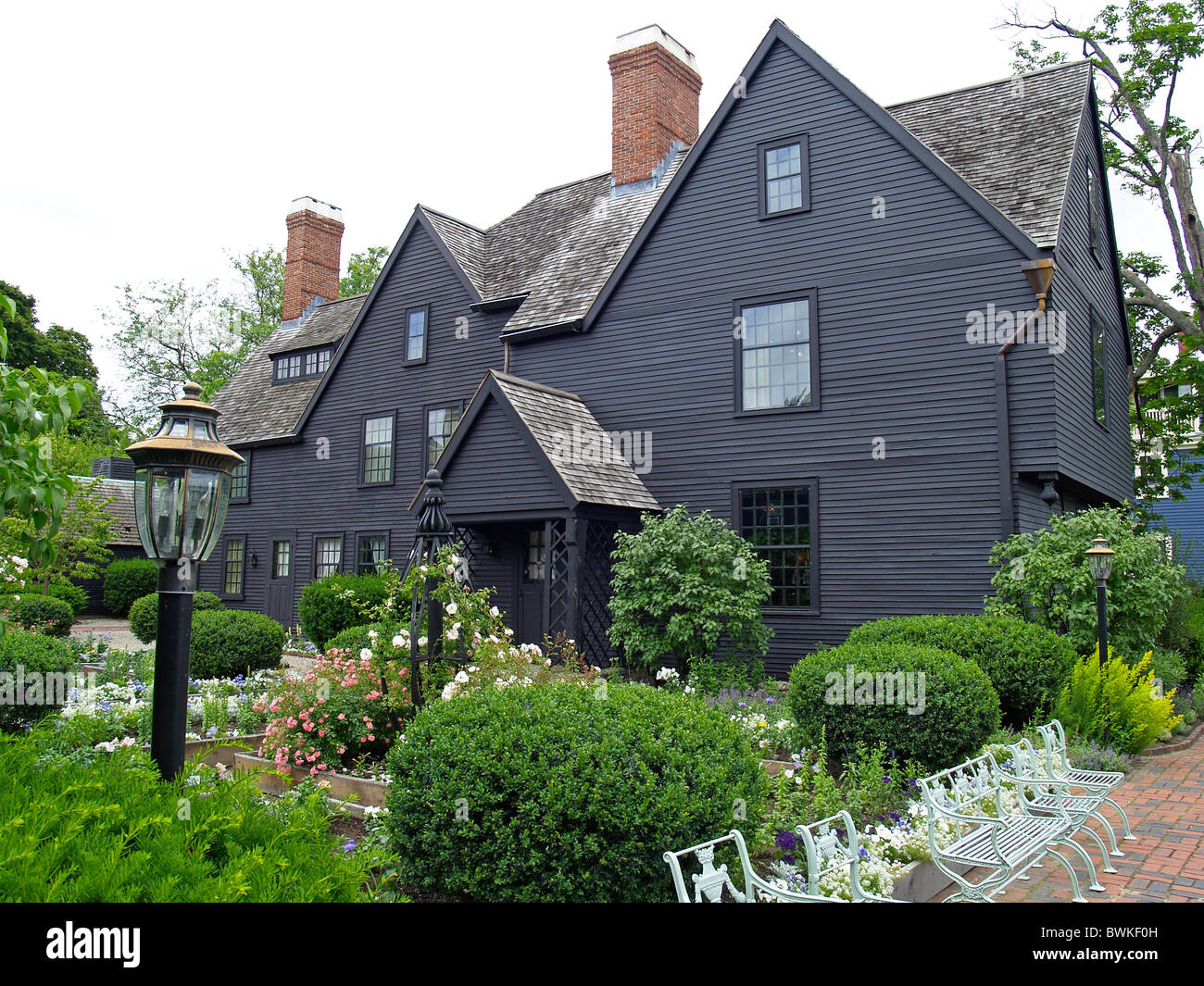Table Of Content

In 1668, sea captain John Turner built a multi-room house on the Salem waterfront. Three generations of Turners lived in the home, increasing its size and the family’s wealth, until John Turner III lost everything and the house was sold to another mariner, Samuel Ingersoll, in 1782. Upon Ingersoll’s death, daughter Susanna inherited the great mansion, where she was often visited by her younger cousin, Nathaniel Hawthorne. The House of the Seven Gables Settlement Association remains one of about 50 settlement houses that still operate in the United States. Caroline Emmerton’s organization has survived for over a century and will continue to help generations of immigrant families. Nathaniel Hawthorne, a relative of the Ingersolls, was infamous for being reclusive during his time living in Salem, in part because Hawthorne himself exaggerated his reputation.
The Witch House and The Salem Witch Museum
The now three-gabled house belonged to the Ingersolls, cousins of the Hawthornes, until 1879. Hawthorne likely only heard of the seven-gabled variant, but it was his imaginary earlier version to which later owners would “restore” the house. The house was built on ground wrongfully seized from its rightful owner, Matthew Maule, by Colonel Pyncheon, the founder of the Massachusetts branch of the family. According to legend, at the time of his death Maule laid a curse upon the Pyncheon family. During the housewarming festivities, Colonel Pyncheon was found dead in his armchair; whether he actually died from the curse or from a congenital disease is unclear. His portrait remains in the house as a symbol of its dark past and the weight of the curse upon the spirit of its inhabitants.
Salem Woods
Recreational photography for personal use is allowed during guided tours, with the exception of the month of October. Professional photography is any session using a paid photographer or any professional-style shoot, including wedding, family, or special event portraits. Professional photography is permitted when approved in advance, requires a signed contract between the photographer and The Gables along with a certificate of insurance. The Uptons sold the property after moving to the Salem Willows neighborhood. Caroline Emmerton, a philanthropist and preservationist, founded The House of the Seven Gables Settlement Association to assist immigrant families who were settling in Salem in the early 20th century. Inspired by Jane Addam’s Hull House, she purchased the “old Turner Mansion” in 1908 and worked with architect Joseph Everett Chandler to restore its perceived original appearance.
Life Without Light: Creatures in the Dark With Sarah McAnulty
Jacobs pleads with the court, on his knees, his walking stick nearby. Between May 1692 and March 1693, 200 innocent people from the Salem region were accused, 25 sentenced to death, 19 hanged and one man pressed to death. A visit to PEM’s Phillips Library Reading Room in nearby Rowley is a special occasion for authors, researchers and history buffs. Captain Samuel Ingersoll, a wealthy ship captain, purchased the property in 1782 from the third generation of Turners. Captain Ingersoll removed four of the gables to create a boxy Federal home more in keeping with the fashion of the time.
Packages start at $750 at The House of the Seven Gables for a ceremony and mini-celebration, an on-site event coordinator, and flexible catering options for a light and lively affair. Phoebe arranges to visit her country home but plans to return soon. Clifford, depressed by his isolation from humanity and his lost youth spent in prison, stands at a large arched window above the stairs and has a sudden urge to jump.
She did the same with the Retire Becket House (c. 1687) and moved it in 1924. Today’s museum campus reflects Emmerton’s generosity and dedication to preservation. Personal/recreational photography is candid, souvenir-type photography using a non-paid photographer.
At the book’s end the descendant of a family long ago defrauded by the Pyncheons lifts his ancestors’ curse on the mansion and marries a young niece of the family. For a fee you can take a tour of the house and learn its history. Along the tour you will have an optional climb through a narrow secret passage way, added by one of the home’s many owners.
Fall & Winter Fun in Salem, Massachusetts - Destination Salem
Fall & Winter Fun in Salem, Massachusetts.
Posted: Wed, 31 Oct 2018 07:00:00 GMT [source]
Historic Structures
After his death in 1804, his daughter Susanna Ingersoll inherited the property. The mansion was both her home and central to her successful business dealings in Salem. Hawthorne visited her often when he worked at the Custom House in Salem from 1845 through 1849. The appearance of the house and his cousin’s tales inspired him to write his famous novel, “The House of the Seven Gables,” in 1851.

In 1864, Hawthorne traveled to New Hampshire with President Franklin Pierce. He died on May 19 and is buried at Sleepy Hollow Cemetery, Concord, MA. He lived in Liverpool for four years and kept a journal related to his travels and observations in England. His reflections on these travels were published in his fictional work, The Marble Faun. Around the time of publication, the Hawthorne family returned to The Wayside.
It was purchased by The House of the Seven Gables Settlement Association and moved to the museum campus in 1958 under the guidance of Abbott Lowell Cummings, a noted architectural historian and conservator. Unlike the high-style Georgian features in The House of the Seven Gables, the Hawthorne Birthplace is a modest example of this style. The Hooper-Hathaway House is a building that was rescued through the combined efforts of Caroline Emmerton and Historic New England. Miss Emmerton purchased the house in 1911 when it demolition became a threat. She had it moved from Washington Street in Salem to its present location.
His ship, Mount Vernon, is best known for brazenly outrunning a French fleet and was depicted in many portraits by Salem maritime painter Michele Felicé Corné. The seaside mansion known as The House of the Seven Gables was built in 1668 for Captain John Turner I, the head of one of the most successful maritime families in the New England colonies. The industriousness of Turner and his descendants in the fishing, trading and mercantile businesses came to define the economy of Puritan New England and contributed to New England’s maritime tradition. The House of the Seven Gables is one of the largest timber-framed mansions in North America still on its original foundation. Embark on an unforgettable tour of The House of the Seven Gables.
The Salem Witch Museum is open throughout the year and offers two primary presentations — a deep dive into 1692 Salem and a look at the evolving perception of the witch dating back to Europe pre-1692. The museum is hard to miss, with its Gothic Revival architecture, and its central location across from Salem’s beautiful common. Its website is filled with stories and videos that describe the trials’ timeline and historical events. “Half-way down a by-street of one of our New England towns, stands a rusty wooden house, with seven acutely-peaked gables…” opens the House of the Seven Gables, a novel by Salem author Nathaniel Hawthorne.
From the cobblestones and colonial landmarks of the Freedom Trail to the picturesque landscapes of the Cape, Massachusetts is a treasure trove of diverse experiences. This year’s Community Conversations series will focus on the history of the Settlement movement, the cultures of the groups with whom Settlement Association works, and what Settlement and Salem looks like today. The original part of the home featured a two-over-two floor plan around a large, central chimney. Turner’s success in business allowed him to construct two additions before his death in 1680, including the great ell that featured grand proportions, high ceilings and enormous windows. Also called the Turner-Ingersoll Mansion, Seven Gables is located right on the water of Salem Harbor at the intersection of Derby and Turner Streets. The large house was built in 1668 and is uniquely constructed with many pointed gables, multiple chimneys, and a dark, foreboding exterior.
John Lennon and Yoko Ono were among those said to have paid their respects at the wrong location. Who would imagine that the Gardner-Pingree House, a masterpiece by architect Samuel McIntire, would be the setting of the savage murder of a rich, old sea captain? Before you climb the elegant staircase to Capt. Joseph White’s bedroom, you will learn about the McIntire carving, the parties that didn’t end till dawn and White’s illegal slave trade. Impulsive and unpleasant, the 82-year-old was not beloved in Salem. His iron chest containing gold doubloons and his decision to disinherit his niece Mary Beckford prompted Beckford’s new husband Joe Knapp and his brother Frank to hire brothers Richard and George Crowninshield to kill White.
Your support enables The Gables to uphold her vision of compassionate service and social justice. In 1668, wealthy merchant and shipowner John Turner I, and his wife Elizabeth Robinson Turner, built the house that is now one of the oldest timber-framed mansions in continental North America. Performers will include violinist Renée Hemsing, an Arlington resident from Los Alamos, New Mexico, who specializes in chamber music and early music performance on both violin and viola.
The House of the Seven Gables Museum Campus was designated as a National Historic Landmark District in 2007. Our seaside campus consists of 2 acres of land, seaside colonial revival gardens, and several historic buildings. In addition to preserving and maintaining our campus, the organization cares for over 3,000 works of art, furnishings, and ephemera as well as an archive with thousands of documents, books, and mixed media. Proctor’s Ledge is a somber memorial at the site where 19 Salem residents were hanged in 1692. The names of all 19 innocent victims killed are inscribed on stone plaques. In July five women, the first of the 19 women and men, were hanged from a tree, then dropped into a crevice and loosely covered with soil.

No comments:
Post a Comment